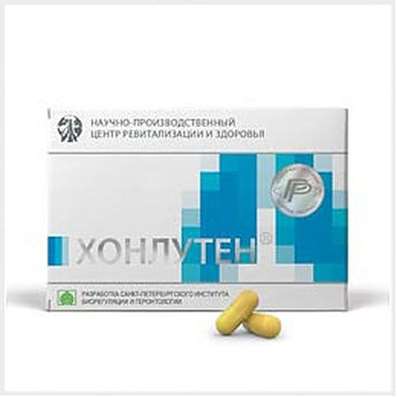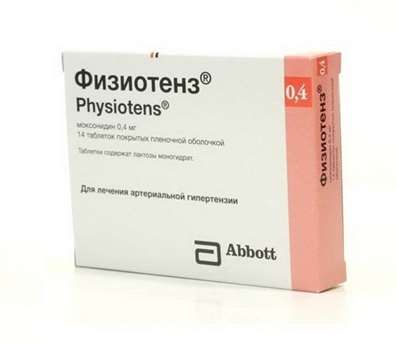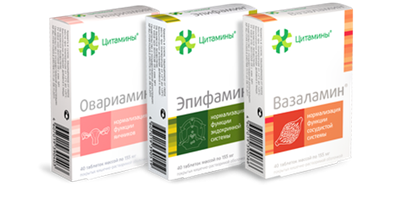Instruction for use: Ferinject
I want this, give me price
Dosage form: Solution for intravenous administration
Active substance: Ferri carboxymaltosas
ATX
B03AC01 Iron oxide polymaltose complexes
Pharmacological group
Iron preparation [Stimulants of hemopoiesis]
The nosological classification (ICD-10)
D50 Iron deficiency anemia: Iron deficiency in food; Anemia due to violations of hemoglobin synthesis and iron metabolism; Anemia of iron deficiency; Iron / folic deficiency anemia; Iron deficiency anemia
Composition
Solution for intravenous administration 1 ml
active substance: Iron carboxymethyltosate 156-208 mg
(Equivalent to an iron content of 50 mg)
Auxiliary substances: sodium hydroxide / hydrochloric acid - to pH 5-7; Water for injection - up to 1 ml
Ferinject® is supplied as a non-dextran (non-dextran drug)
Description of dosage form
Opaque solution of dark brown color.
Pharmachologic effect
Mode of action - Replenishing iron deficiency, anti-anemia.
Pharmacodynamics
Ferinject®, a solution for intravenous administration, contains ferric iron in stable form as an iron complex consisting of a multinucleated iron hydroxide nucleus with a carbohydrate ligand. Because of the high stability of the complex, there is only a very small amount of loosely bound iron (also called labile or free iron). The complex is designed to provide a controlled source of recycled iron for iron-transporting and iron-depositing proteins (transferrin and ferritin, respectively). Clinical studies have shown that the hematologic response and filling of the iron depot occurs faster after intravenous administration of the Ferinject® preparation as compared to the ingested analogues.
Utilization of erythrocytes 59Fe and 52Fe from the radiolabeled Ferinject® preparation ranged from 61 to 99%. After 24 days, patients with iron deficiency noted the utilization of radioactively labeled iron from 91 to 99%, and in patients with anemia of renal genesis, the utilization of radiolabelled iron was 61 to 84%.
Pharmacokinetics
It was shown that 59Fe and 52Fe from Firinject® were rapidly excreted from the blood and moved to the bone marrow, as well as deposited in the liver and spleen.
After a single administration of the drug in a dose of 100 to 1000 mg of iron in patients with iron deficiency, Cmax of serum from 37 to 333 mkg / ml was achieved 15 minutes later, 1.21 hours after injection, respectively. Vd of the central chamber corresponds to the volume of plasma (about 3 liters).
Iron after injection or infusion was rapidly excreted from the blood plasma, T1 / 2 varied from 7 to 12 hours, the average time of finding the drug was 11 to 18 hours. Excretion of iron by the kidneys is negligible.
Indications of the Ferinject
Iron deficiency anemia in the case when oral iron preparations are ineffective or cannot be used.
The diagnosis should be confirmed by laboratory tests.
Contraindications
Hypersensitivity to iron complex of carboxymethyltosate, iron solution of carboxymethyltosate or any of the components of the preparation;
Anemia not related to iron deficiency, eg other microcytic anemia;
Signs of iron overload or disruption of iron utilization;
Children under 14 years.
With caution: in patients with impaired liver function, iron can be administered parenterally only after a thorough assessment of the relationship between benefit and risk. It is necessary to avoid the parenteral use of iron in patients with impaired liver function, if overloading with iron can accelerate the course of the disease, especially with late cutaneous porphyria. To avoid overloading with iron, careful monitoring of the status of iron is recommended.
There are no data on safe use in patients with chronic kidney disease who are on hemodialysis and who receive single doses of more than 200 mg of iron. It is necessary to use parenteral iron with caution in acute and chronic infection, asthma, eczema and atopic allergy. It is recommended to stop the use of Ferinject® in patients with ongoing bacteremia. In patients with chronic infection, all the risks and benefits of therapy need to be weighed, taking into account oppressed erythropoiesis caused by chronic infection.
1 ml of the drug contains up to 5.5 mg of sodium. This should be taken into account for patients with sodium controlled diet.
The use of the drug Ferinject® has not been studied in children under 14 years of age.
Application in pregnancy and breastfeeding
Data on the use of the drug during pregnancy are absent. Use the drug during pregnancy should be only if the potential benefit to the mother exceeds the risk to the fetus. If the benefits of treatment with Ferinject® are less than the potential risk to the fetus, it is recommended that therapy be limited to the second and third trimesters.
There is only a small experience in the use of the drug in breast-feeding mothers. Clinical studies have shown that the intake of iron from the drug Ferinject® in breast milk is negligible (less than 1%). Based on limited data on use in breastfeeding women, it is unlikely that the drug is dangerous for infants breastfed.
Side effects
Side effects, according to clinical studies (before and after drug registration, including safety studies after drug registration). Side effects of Ferinject®, observed in patients taking iron carboxymethyltosate (n = 7391), according to clinical studies, are summarized in Table 3. The most common side effect in patients with the drug was nausea, which was observed with a frequency> 1/100, <1/10.
Table 3
Side effects of the drug, according to clinical studies
| System or organ | Frequency | ||
| Frequently (≥1/100, <1/10) | Infrequently (≥1/1000, <1/100) | Rarely (≥1/10000, <1/1000) | |
| From the immune system | - | Hypersensitivity | Anaphylactoid reactions |
| From the side of metabolism and nutrition | Hypophosphatemia | - | — |
| From the nervous system | Headache, dizziness | Paresthesia, perversion of taste | — |
| From the heart | - | Tachycardia | — |
| From the side of the vessels | Rush of blood to the face, increased blood pressure | Decreased blood pressure | — |
| On the part of the respiratory system, the organs of the thorax and the mediastinum | - | Dyspnea | — |
| From the gastrointestinal tract | Nausea | Vomiting, indigestion, abdominal pain, constipation, diarrhea | |
| From the skin and subcutaneous tissues | - | Skin itching, urticaria, erythema, skin rash1 | — |
| From the musculoskeletal system and connective tissue | - | Myalgia, back pain, joint pain, pain in the limbs, muscle cramps | — |
| General disorders and disorders at the site of administration | Reactions in the area of injection / infusion2 | Fever, weakness, chest pain, peripheral swelling, pain, chills | sickliness |
| Laboratory and instrumental data | Increase in ALT level | Increased activity of ALT, AST, GGT, LDH in the blood, AF in the blood | — |
Spontaneous post-marketing reports of side effects
As part of the post-marketing control of the use of Ferinject®, the side effects noted in Table 4 were observed.1
Table 4
Spontaneous post-marketing reports
| System or organ | Common Symptoms1 |
| From the nervous system | Loss of consciousness and vertigo |
| Disorders of the psyche | Anxiety |
| From the side of the heart and blood vessels | Fainting, pre-fainting condition |
| From the skin and subcutaneous tissues | Angioedema, dermatitis, pallor and swelling of the face |
| On the part of the respiratory system, the organs of the thorax and the mediastinum | Bronchospasm |
| General disorders and disorders at the site of administration | Flu-like disease |
Interaction
As well as any other parenteral preparations of iron, preparation Ferinject® reduces absorption of iron from GASTROINTESTINAL TRACT at simultaneous application with preparations of iron for intake. Therefore, if necessary, oral iron therapy should begin no earlier than 5 days after the last injection of Ferinject®.
Pharmaceutical compatibility: Firinject® is compatible only with 0.9% sodium chloride solution. No other intravenous solutions and medicinal substances should be administered, because there is a potential risk of precipitation and / or interaction.
Dosing and Administration
IV – stream or drop (infusion) and by direct injection into the venous section of the dialysis system.
Before use, inspect the vials for possible sediment and damage. You can use only a homogeneous solution without sediment.
Ferinject® should be used in departments that have the necessary equipment to provide emergency medical care in the event of anaphylactic reactions. Each patient should be observed for signs or symptoms of hypersensitivity reactions for at least 30 minutes after each administration of the ferric iron solution of carboxymethyl steroate (see "Specific guidance").
Intravenous infusion: Ferinject® can be injected intravenously (infuzionno) in a maximum single dose up to 1000 mg of iron (maximum 20 mg of iron / kg). You cannot administer intravenous infusion of 1000 mg of iron (20 ml of Ferinject®) more than 1 time per week. Immediately before the infusion, the Ferinject® preparation should be diluted with a sterile 0.9% solution of sodium chloride for injection in the ratios indicated in Table 1.
Table 1
Guidance on the dilution of Ferinject® for infusion
| Ferinject®, ml | Iron, mg | Sterile 0.9% solution of sodium chloride for injection, ml1 | Minimal time of administration, min |
| >2 to 4 | >100 to 200 | 50 | - |
| >4 to 10 | >200 to 500 | 100 | 6 |
| >10 to 20 | >500 to 1000 | 250 | 15 |
Determination of the cumulative dose of iron: the cumulative dose for the replacement of iron stores with iron carboxymethyltosate is determined based on the patient's body weight and the Hb level and should not be exceeded. When determining the cumulative dose of iron, the following table 2 should be used.
Table 2
The cumulative dose of iron based on the patient's body weight and Hb level
| Hb, g/dl | Patients with a body weight of 35 to <70 kg | Patients with a body weight of ≥70 kg |
| <10 | 1500 mg | 2000 mg |
| ≥10 | 1000 mg | 1500 mg |
Note: in patients with a body weight of less than 35 kg, a cumulative dose of 500 mg iron cannot be exceeded.
In determining the need for iron in patients with excessive body weight should be based on the normal ratio of body weight and blood volume.
Patients with Hb ≥14 g / dl should be given an initial dose of 500 mg of iron and the iron content should be checked before further administration.
After replenishment, regular assessments should be made to make sure that the iron level has normalized and is maintained at the proper level.
The maximum tolerable single dose: a single dose of the drug should not exceed 1000 mg of iron (20 ml) per day or 20 mg of iron (0.4 ml) per 1 kg. A dose of 1000 mg of iron (20 ml) can not be administered more than once a week.
Use of the drug for chronic kidney disease requiring hemodialysis. Do not exceed the maximum daily dose of 200 mg in patients with chronic kidney disease requiring hemodialysis
Overdose
The introduction of the drug Ferinject® in an amount exceeding the body's requirements, can cause an overload with iron, which manifests itself with symptoms of hemosiderosis. Determining such indicators of iron metabolism as serum ferritin and the percentage of transferrin saturation can help in the diagnosis of excessive iron deposition in the body. If iron accumulation occurs, treatment should be performed in accordance with standard medical practice, for example, the use of a chelating agent for iron binding can be considered.
Special instructions
The drug should not be used for IM or SC administration.
Each vial of Ferinject® is intended for single use only.
The drug Ferinject® should be given only to those patients in whom the diagnosis of anemia is confirmed by appropriate laboratory data.
Parenterally administered iron preparations can cause hypersensitivity reactions, including anaphylactoid, which can be fatal, and appropriate means should be available for cardiopulmonary resuscitation. If hypersensitivity reactions or signs of intolerance occur during the use of the drug, it is necessary to immediately stop treatment.
Also, hypersensitivity reactions have been reported after previous uncomplicated injections of any parenteral iron complexes, incl. Iron carboxymethyltosate. Each patient should be monitored for the development of adverse reactions for a minimum of 30 minutes after each administration of the ferric iron carboxymethylate solution.
Care should be taken with IV administration of the drug to prevent the drug from penetrating into the circumveneal area, This can cause skin irritation and possible long-term staining of the tissues at the point of introduction into the brown color. When the drug penetrates into the circumferential space, the drug should be discontinued immediately.
Influence on ability to drive vehicles, mechanisms. There is no data on the effect of the drug on the ability to drive vehicles and mechanisms. However, some side effects (such as dizziness, fainting, anticipation, and others) can affect the ability to drive vehicles and mechanisms. Patients who report these side effects should be advised not to drive vehicles and mechanisms Until the symptoms disappear completely.
Release form
Solution for intravenous administration, 50 mg / ml: in bottles of transparent colorless glass (type I, European Pharmacopoeia), hermetically sealed with chlorobutyl rubber stoppers and crimped aluminum caps with plastic inserts such as Flip off, 2 or 10 ml each; 1 fl. 2 or 10 ml in a cardboard package, 2 fl. 10 ml in a plastic pallet-holder in a cardboard bundle, 5 fl. 2 ml or 10 ml in a plastic pallet holder in a cardboard bundle.
Manufacturer
The company that produces quality control: Vifor (International) Inc. Rehenhstrasse, 37, SN-9014, Art. Gallen, Switzerland.
Vifor (International) Inc. Rechenstrasse 37, CH-9014, St. Gallen, Switzerland.
BIPSO GmbH, Robert-Gervig-Straße 4, 78224, Singen, Germany.
GP Grenzach Productions GmbH, Emil-Barell-Strasse 7, 79639, Grenzach-Wilen, Germany.
Aidi Biology GmbH, Am Pharmapark, 06861, Dessau-Rosslau, Germany.
IDT Biologika GmbH, Am Pharmapark, 06861, Dessau-Roslau, Germany.
Claims of consumers should be sent to the address of OOO Takeda Pharmaceuticals: 119048, Moscow
Conditions of supply of pharmacies
On prescription.
Storage conditions of the drug Ferinject
At temperatures not higher than 30 ° C, in the original packaging (do not freeze).
Keep out of the reach of children.
Shelf life of the drug Ferinject
3 years.
Do not use after the expiry date printed on the package.

 Cart
Cart





